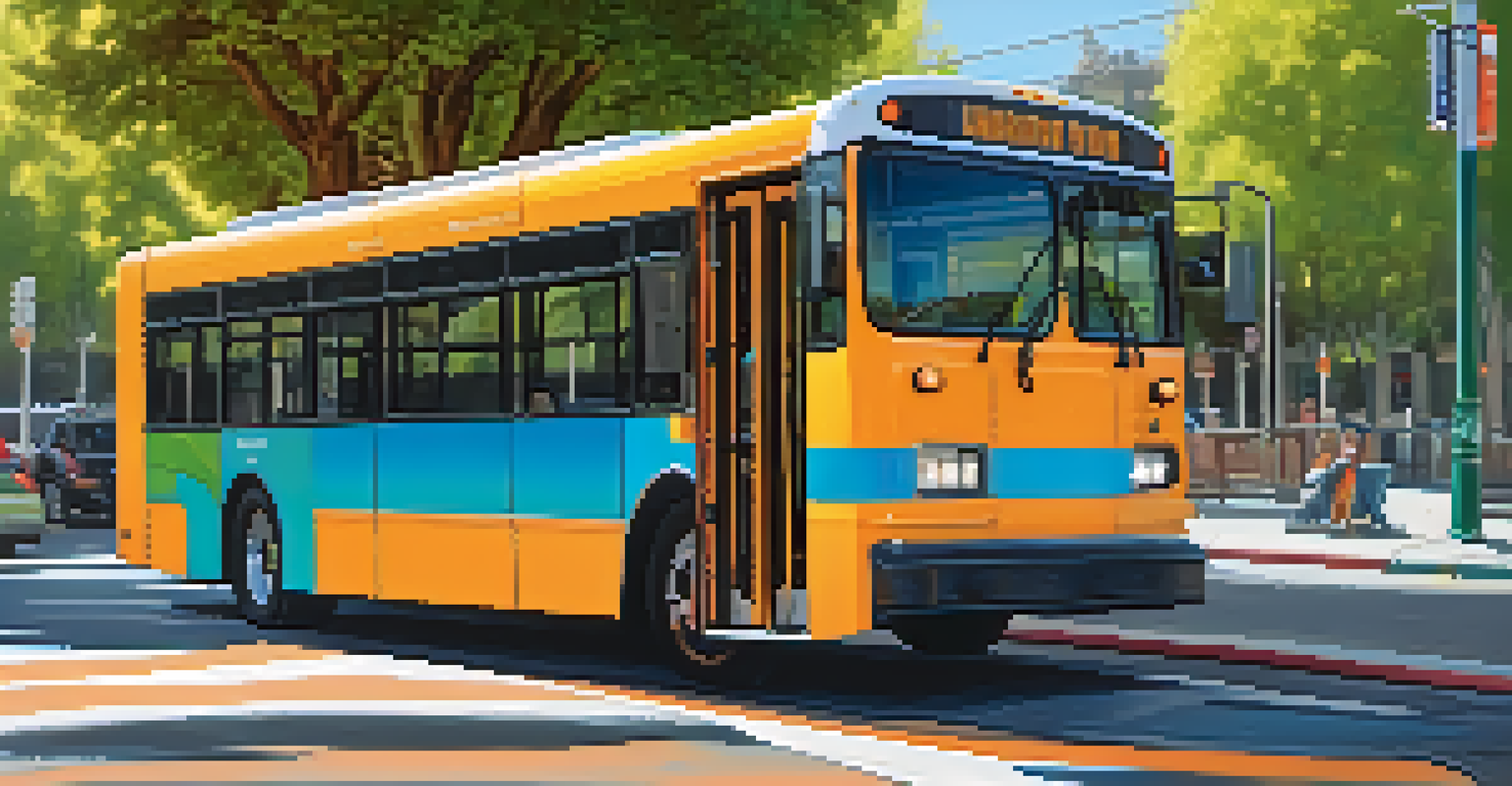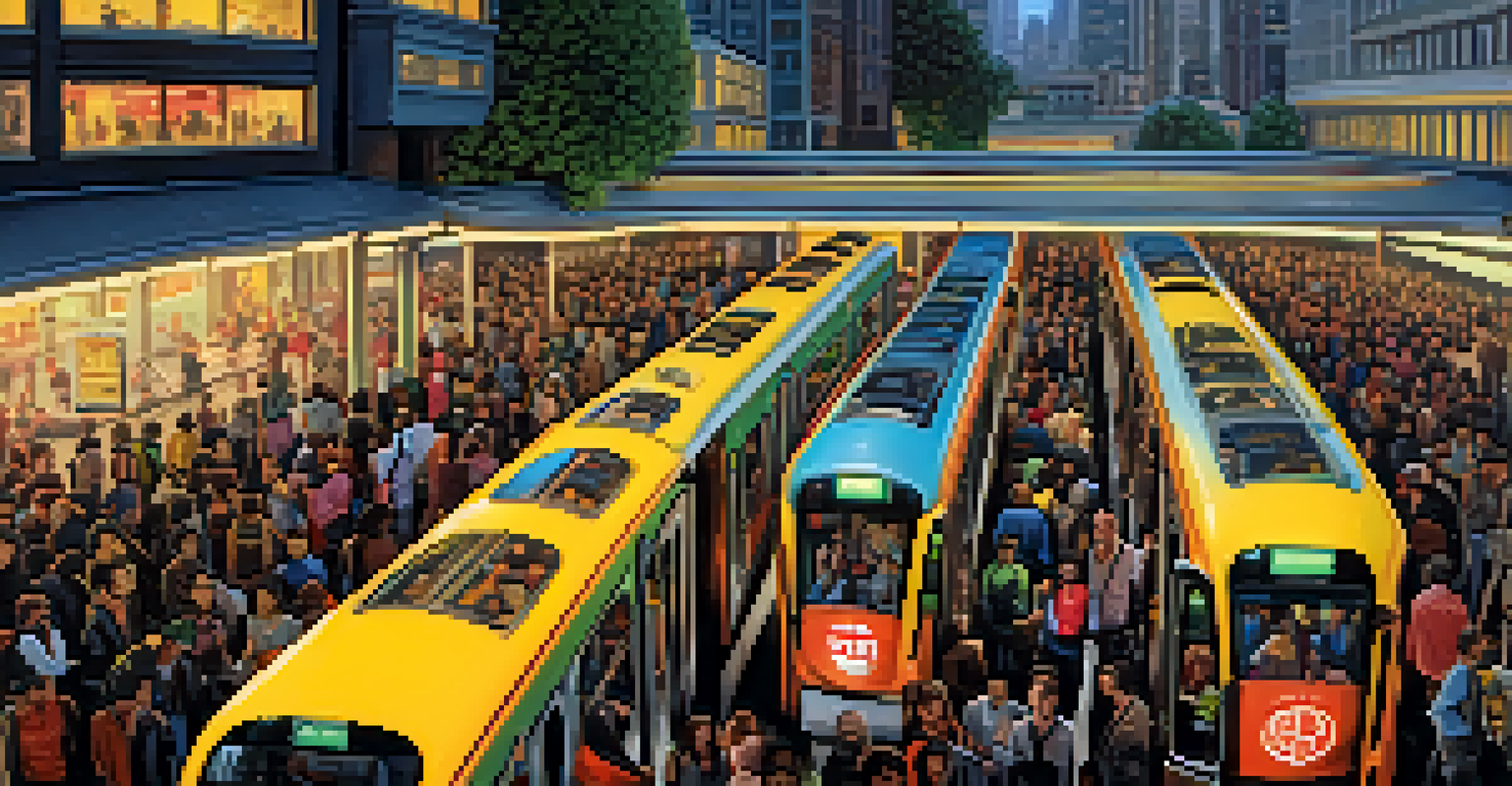Muni: San Francisco's Municipal Railway Evolution Through Time

The Origins of Muni: A Journey Begins
The story of Muni begins in 1912 when the San Francisco Municipal Railway was established to provide affordable public transportation. The city sought to create a reliable transit system that would serve its growing population. Initially, Muni operated a fleet of streetcars, which quickly became the backbone of the city's public transport network.
Public transportation is the backbone of a city’s economy, providing vital links to jobs, schools, and services.
The first line, known as the 'Market Street Railway,' connected key neighborhoods, making it easier for residents to commute to work and school. This early success demonstrated the demand for public transport in a city known for its steep hills and vibrant culture. As ridership grew, so did the need for expansion and innovation.
By 1915, Muni had expanded its service to include more streetcar lines and even began experimenting with electric trolleybuses. These early developments set the stage for a public transportation system that would evolve significantly over the decades.
Challenges of the Mid-20th Century: Adapting to Change
The mid-20th century posed several challenges for Muni as the rise of the automobile began to dominate urban life. With more residents owning cars, ridership began to decline, leading to budget cuts and reduced services. This period prompted the city to rethink its public transportation strategy and find ways to attract riders back to the system.

In response to these challenges, Muni introduced new initiatives, such as the 'Muni Metro' light rail system in the late 1970s, which provided a modern alternative to the aging streetcar network. This shift aimed to enhance connectivity between neighborhoods and streamline transit routes. However, the transition was not without its difficulties, as construction and disruptions affected existing services.
Muni's Historical Evolution
Muni's journey from its 1912 inception as a streetcar service to a modern transit agency showcases its adaptability to changing urban needs.
Despite these hurdles, Muni remained committed to improving its offerings, focusing on accessibility and reliability to regain the trust of the community. The efforts to modernize the fleet and infrastructure laid the groundwork for future advancements.
The 21st Century: Embracing Technology and Sustainability
Entering the 21st century, Muni has made significant strides in embracing technology to enhance the commuter experience. The introduction of real-time tracking apps and digital signage at bus stops has made it easier for riders to plan their journeys effectively. These technological advancements have transformed the way people interact with public transit.
A city’s public transit system reflects its values: accessibility, sustainability, and community engagement.
Moreover, Muni is increasingly focusing on sustainability. The agency has introduced electric buses to its fleet, reducing emissions and promoting cleaner air in the city. This commitment to environmental responsibility aligns with San Francisco’s larger goals of becoming a greener city, appealing to eco-conscious commuters.
In addition, Muni continues to invest in infrastructure improvements, ensuring that its systems are not only functional but also efficient. The combination of technology and sustainability initiatives positions Muni as a forward-thinking transit system that meets the needs of modern urban commuters.
Muni's Impact on Urban Development and Community
The influence of Muni extends beyond just transportation; it has played a vital role in shaping San Francisco's urban landscape. By providing reliable transit options, Muni has facilitated the development of neighborhoods, making them more accessible and attractive to residents and businesses alike. This has led to a vibrant urban environment that thrives on diversity.
Moreover, Muni has fostered a sense of community among riders. The shared experience of commuting brings together people from different backgrounds, creating opportunities for social interactions. Events like 'Muni Madness' further celebrate the cultural significance of public transport in the city, strengthening community ties.
Impact on Community and Economy
Muni plays a crucial role in shaping San Francisco's urban landscape and economy by providing essential transit options that connect residents and support local businesses.
Additionally, Muni's accessibility initiatives have ensured that transit options are available to everyone, including those with disabilities. This commitment to inclusivity enhances the overall quality of life for San Francisco residents, making the city more livable and connected.
The Role of Muni in San Francisco's Economy
Muni is not just a public service; it plays a crucial role in San Francisco's economy. By providing efficient transportation, Muni enables thousands of people to commute to work, supporting local businesses and the overall economy. The interdependence between public transport and economic growth is evident in the bustling commercial districts served by Muni lines.
Moreover, Muni helps to reduce traffic congestion by offering an attractive alternative to driving. This alleviates pressure on the city’s roadways and contributes to a more dynamic urban economy. Less congestion means faster deliveries for businesses and shorter commutes for employees, ultimately benefiting everyone.
Muni also supports tourism, connecting visitors with key attractions throughout the city. Tourists rely on Muni to explore iconic sites, contributing to the hospitality and service sectors, making it an essential component of San Francisco's economy.
Future Directions: What Lies Ahead for Muni
As we look to the future, Muni is poised to continue evolving to meet the growing demands of San Francisco's population. With ongoing discussions about expanding service areas and enhancing existing routes, the agency is actively seeking input from the community to shape its direction. Engaging with riders ensures that Muni remains relevant and responsive to their needs.
Innovation will be key in the years to come. Muni is exploring options like autonomous vehicles and advanced scheduling systems that could revolutionize public transport. These technological advancements could streamline operations and enhance the rider experience, making Muni an even more attractive option.
Future Focus on Sustainability
Muni is committed to embracing technology and sustainability, aiming to reduce its carbon footprint while enhancing public transport services for the future.
Finally, the focus on sustainability will continue to guide Muni’s initiatives. By committing to reducing its carbon footprint and investing in eco-friendly technologies, Muni aims to lead by example in creating a greener urban environment. The future of Muni looks promising, with a blend of tradition and innovation at its core.
Muni: A Reflection of San Francisco's Spirit
At its core, Muni is more than just a transit system; it reflects the spirit and resilience of San Francisco. From its humble beginnings to its current status as a modern transit agency, Muni embodies the city’s commitment to accessibility, community, and sustainability. Each ride tells a story of connection and progress.
The colorful streetcars and buses that traverse the city's iconic hills are symbols of the diverse communities they serve. Muni has created a platform for individuals to share their experiences, fostering a sense of belonging among riders. This shared journey through the city is a testament to the vibrancy of San Francisco.

In conclusion, Muni's evolution is an ongoing narrative that captures the essence of a city in motion. As it navigates the challenges of the future, Muni remains a vital lifeline for San Francisco, embodying the values of innovation, inclusivity, and community.